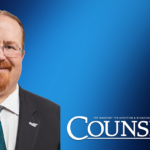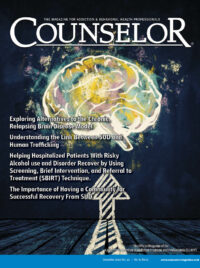Share
Imagine a friend or a loved one has completed treatment and has now abstained from using substances for six months. There are coins awarded, hugs and kisses, and sighs of relief from loved ones. As a society and a circle of support, we celebrate because we believe that our loved one has obtained “recovery.” It feels tangible; as real as the smiles on our faces and the turning of the pages on the calendar.
But is this really recovery? Recovery is defined by the American Society of Addiction Medicine (ASAM) as, “A process of sustained action that addresses the biological, psychological, social, and spiritual disturbances inherent in addiction.” It goes on to say, “Recovery aims to improve the quality of life by seeking balance and healing in all aspects of health and wellness, while addressing an individual’s consistent pursuit of abstinence, impairment in behavioral control, dealing with cravings, recognizing problems in one’s behaviors and interpersonal relationships, and dealing more effectively with emotional responses.” [1] Only once does this definition mention “clean time” and even then, it only describes time as “sustained action.”
The medical community is used to measuring healing from disease with multiple matrices. People with diabetes have their blood sugar levels measured (A1C). Yet they also have their blood pressure monitored, LDL cholesterol frequently checked, and their eyes and feet evaluated for possible impact from the disease. Astoundingly, the medical community also recognizes that diabetes more than doubles the risk of developing depression because living with a chronic condition like diabetes, coping with biological and hormonal factors, and needing to manage the condition on a daily basis may increase the risk of depression. Physicians work with the brain, body, and motivation when considering what successful management of the disease is. There is no medal and pat on the back for a month of low A1C – there is an acknowledgment that successful management of the disease is measured on multiple fronts and is a lifelong process that takes work.
If we were to compare addiction to other chronic diseases, which all have multiple positive and negative indicators that are measurable, we would understand just how insufficient the length of time since last use is as a measure of “recovery.” Confusing sobriety with recovery is as old as the Big Book itself and the concept of the “dry drunk” is not new to those who have adhered to the 12-Step recovery principles. Even the forefathers of the recovery movement knew there is more to recovery than abstaining – they foreshadowed the need to take all factors into account when evaluating recovery from the disease.
Time spent abstaining from substances will always be an important measure, much like A1C is to diabetes, but there is hope that emerging outcomes concepts can provide a better picture of recovery. Recovery Capital measurement can serve as a means to measure “recovery vital signs,” similar to how a list of measurements is used for diabetes. Unlike abstention as a single data point, this tool can be used to measure recovery outcomes from harm reduction to long-term recovery. It can also be used as a predictive factor for relapse, thus making it useful in preventing poor outcomes and supporting behavior that leads to improved disease management. Simply put, Recovery Capital measurement leads individuals toward better health and flashes warning signs when low readings become critical. It allows people in recovery, therapists, researchers, and society to see, in real-time, how the “inputs” in the “pursuit of seeking balance and healing in all aspects of health and wellness” are related to the outcomes of doing so.
There have been a number of variations, but the current leaders of the pack in developing excellent monitoring tools are the Recovery Capital Index (RCI), Recovery Screener (also known as the Recovery Capital Assessment (RCA)), and Rec-Cap. These groundbreaking tools are the future of outcomes measurement. All measure the standard Recovery Capital categories: personal capital, community capital, and social capital. They all have numeric scoring systems in which the individual can look at where their strengths are to be able to utilize and enhance them.
These outcome tools can be used by individuals to manage their recovery on their own terms. Recovery Capital is a measurement of progress. It does not matter what pathway is chosen; whether it is 12-steps, Life Ring, Celebrate Recovery, Red Road, freestyle, etc. In addition to the direct impact to the individual using recovery capital measurement to support recovery, these new tools finally give the treatment profession and industry what has been needed for decades – a way to aggregate data to answer questions about outcomes. By measuring recovery capital over months, years, and decades in the aggregate, we will be able to see if people’s lives are improving longitudinally, and more importantly, which improvements in recovery capital “buckets” had the most impact on improvement for diverse populations. I look forward to the day when we will finally have a more complete picture of recovery than just abstinence, which a majority of the current outcome tools or voluntary surveys use.
About Me
Pete Nielsen is the President and Chief Executive Officer for the California Consortium of Addiction Programs and Professionals (CCAPP), CCAPP Credentialing, CCAPP Education Institute and the Behavioral Health Association of Providers (BHAP), and Publisher of Counselor Magazine
CCAPP is the largest statewide consortium of addiction programs and professionals, and the only one representing all modalities of substance use disorder treatment programs. BHAP is the leading and unifying voice of addiction-focused treatment programs nationally.
Mr. Nielsen has worked in the substance use disorders field for 20 years. In addition to association management, he brings to the table experience as an interventionist, family recovery specialist, counselor, administrator, and educator, with positions including campus director, academic dean, and instructor.
Mr. Nielsen is the secretary of the International Certification and Reciprocity Consortium, and the publisher for Counselor magazine. He is a nationally known speaker and writer published in numerous industry-specific magazines. Mr. Nielsen holds a Master of Arts in counseling psychology and a Bachelor of Science in business management.












 Counselor Magazine is the official publication of the California Association of Addiction Programs and Professionals (CCAPP). Counselor offers online continuing education, article archives, subscription deals, and article submission guidelines. It has been serving the addiction field for more than thirty years.
Counselor Magazine is the official publication of the California Association of Addiction Programs and Professionals (CCAPP). Counselor offers online continuing education, article archives, subscription deals, and article submission guidelines. It has been serving the addiction field for more than thirty years.